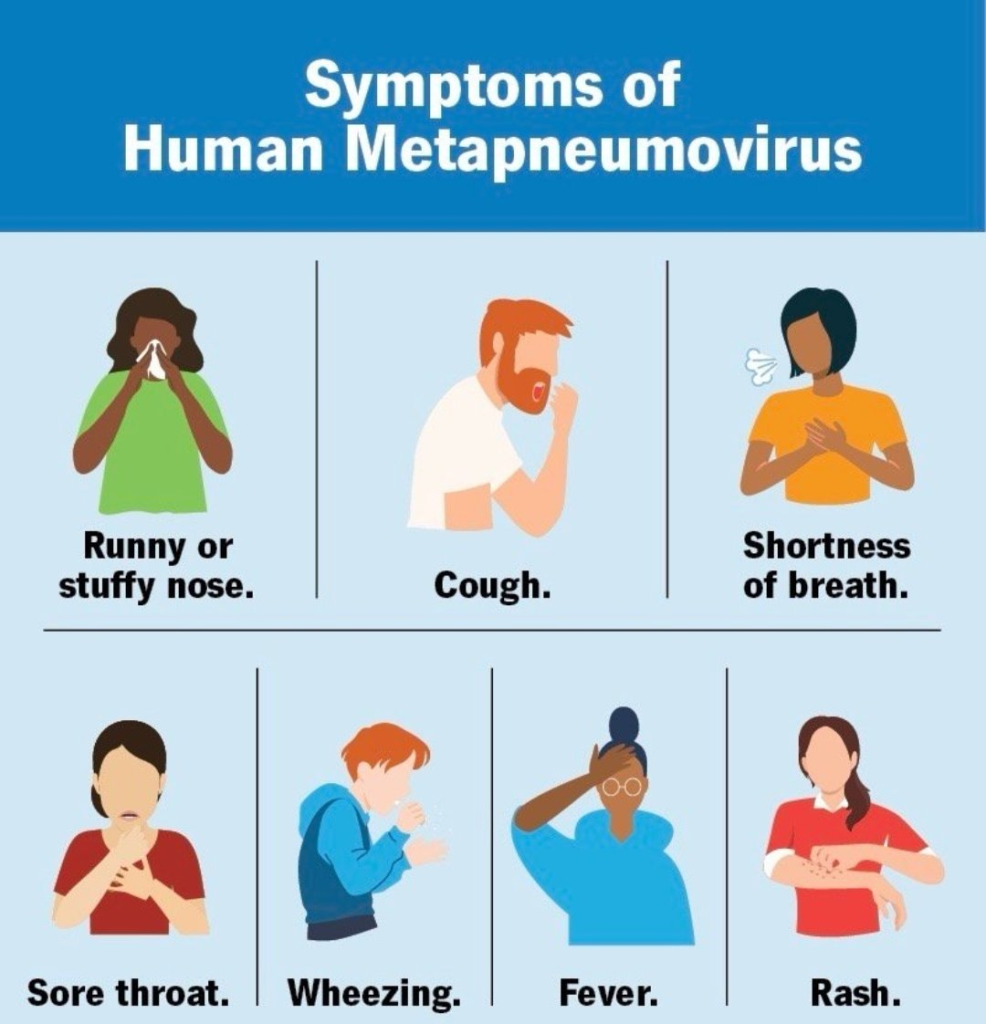China is currently facing a surge in human metapneumovirus (HMPV) cases, raising concerns about its potential impact on public health. This outbreak comes amidst reports of overwhelmed hospitals, particularly in northern provinces, where the virus has been spreading rapidly. Here’s an in-depth look at what is HMPV, its symptoms, and the measures to mitigate its spread.
What is Human Metapneumovirus (HMPV)?
Human metapneumovirus, commonly referred to as HMPV, was first identified in 2001. Belonging to the same family as the respiratory syncytial virus (RSV), it causes upper and lower respiratory tract infections. While the virus affects all age groups, young children, older adults, and individuals with weakened immune systems are most vulnerable to severe outcomes.

HMPV typically presents with symptoms similar to the flu, including cough, fever, and nasal congestion. In severe cases, it can lead to bronchitis, pneumonia, or exacerbate asthma.
HMPV Symptoms?
The symptoms of HMPV often mimic those of a cold or flu. They range from mild to severe and include:

- Common Symptoms:
- Cough
- Stuffy or runny nose
- Fever
- Sore throat
- Severe Symptoms:
- Wheezing or difficulty breathing
- Fatigue
- Symptoms progressing to bronchitis or pneumonia
Vulnerable groups, such as young children and the elderly, are more likely to experience severe complications.
HMPV Outbreak in China: Current Situation
Reports from China indicate a rise in HMPV cases, particularly among children under 14. Hospitals in affected areas, especially in northern provinces, are seeing increased admissions, raising public concern. HMPV is now among the top respiratory viruses detected, alongside influenza, COVID-19, and Mycoplasma pneumoniae.
Videos on social media highlight overcrowded healthcare facilities, but Chinese authorities and the World Health Organization (WHO) have not declared the outbreak an emergency. Experts believe the winter season, a peak time for respiratory illnesses, is exacerbating the spread.
Neighboring countries, including India, are monitoring the situation but have reassured their citizens that there is no immediate cause for alarm.
How HMPV Spreads
HMPV spreads through respiratory droplets when an infected person coughs or sneezes. It can also be transmitted through close personal contact, such as hugging or shaking hands, and by touching contaminated surfaces followed by touching the face.
The virus is seasonal, with higher transmission rates during late winter and spring in temperate regions.
Preventing HMPV Infection
The U.S. Centers for Disease Control and Prevention (CDC) recommends several measures to prevent HMPV infection:
- Wash hands thoroughly with soap and water for at least 20 seconds.
- Avoid touching your face with unwashed hands.
- Wear masks in crowded spaces during outbreaks.
- Stay home if you are feeling unwell.
- Clean frequently touched surfaces regularly.
By adopting these precautions, individuals can reduce the risk of contracting and spreading HMPV.
Could This Lead to Another Pandemic?
Experts believe it is unlikely that HMPV will cause a global pandemic. While the current outbreak in China is concerning, HMPV is a known seasonal virus, and its spread is consistent with patterns seen in similar respiratory illnesses.
Health officials are monitoring the situation closely to address any potential risks and ensure adequate healthcare responses.


